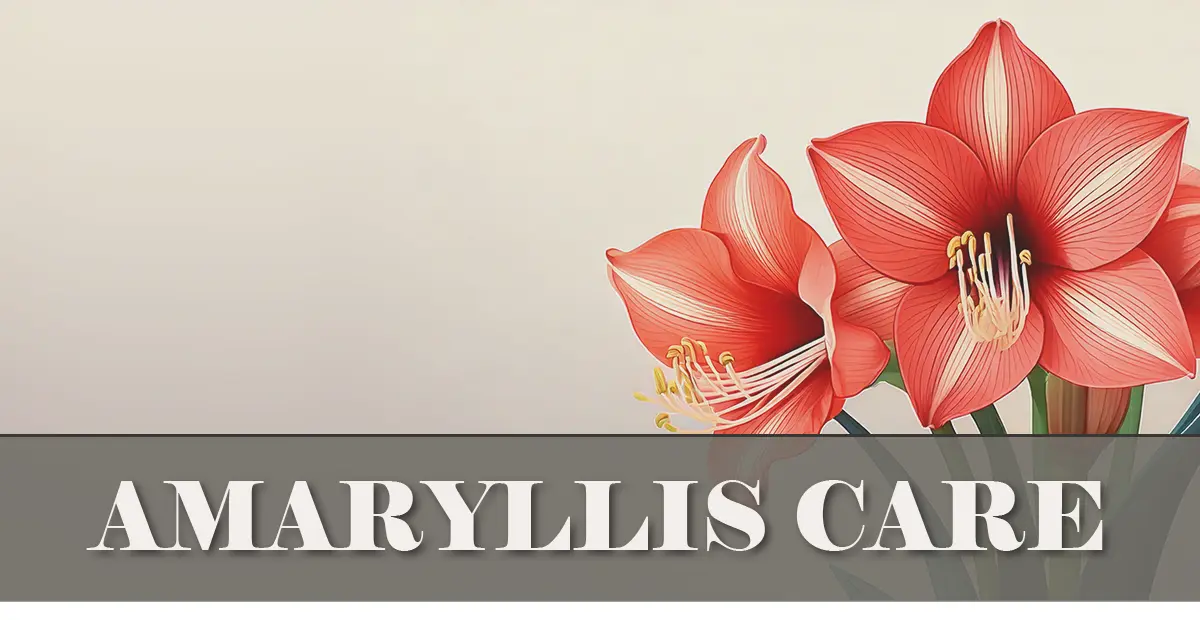Tulips need a chilling period to bloom. Crocus and hyacinth likewise need cold stratification to flower. Some ornamental lilies may struggle in Southern California’s hot, dry summers.
What’s an aspiring bulb flower gardener to do?
You’ll be happy to learn that the show-stopping amaryllis is designed almost by Providence to prevail where tulips, hyacinths, and crocuses fail.
Why Southern California Is Perfect for Amaryllis
Amaryllis is native to the tropical and subtropical regions of South and Central America.
Southern California isn’t tropical, but it’s close enough for amaryllis to flourish year-round. Here’s why:
- Amaryllis plants are sensitive to frost. Mild winters ensure uninterrupted growth.
- Amaryllis loves sunlight; Southern California has no shortage of it.
- California’s well-draining sandy or loamy soils prevent bulb rot.
So, if you’re a California gardener, you’re in luck! And if you live in Michigan, should you abandon all hope of amaryllis cultivation? Not at all, because this spectacular tropical plant grows equally well indoors.
Best Amaryllis Varieties for Southern California
Most amaryllis varieties are well-suited for SoCal’s balmy climate, but these are a few of our favorites.
Red Lion
- A classic variety with large, trumpet-shaped, deep red flowers
- Grows 18–24 inches
- Blooms feature velvety red petals, typically 6–8 inches across
- Blooms in late winter to early spring indoors or spring outdoors in mild climates
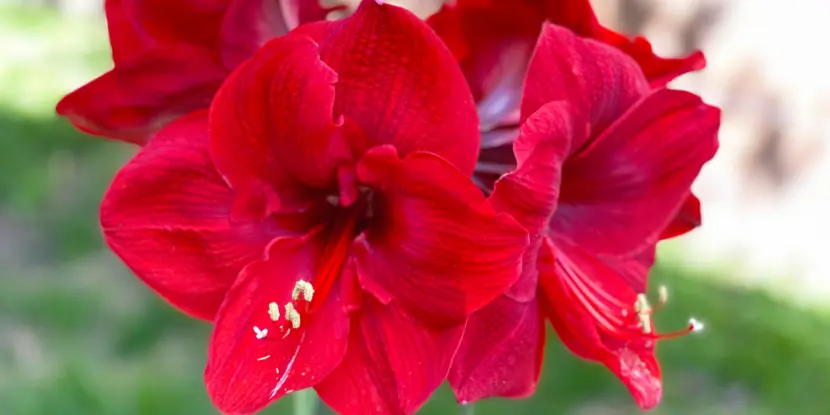
The bold crimson flowers of the Red Lion amaryllis.
Apple Blossom
- A delicate variety with large, white flowers featuring pink or green stripes
- Grows 18–24 inches
- Blooms have a sweet fragrance and typically measure 6–8 inches across
- Blooms in late winter to early spring indoors or spring outdoors in mild climates
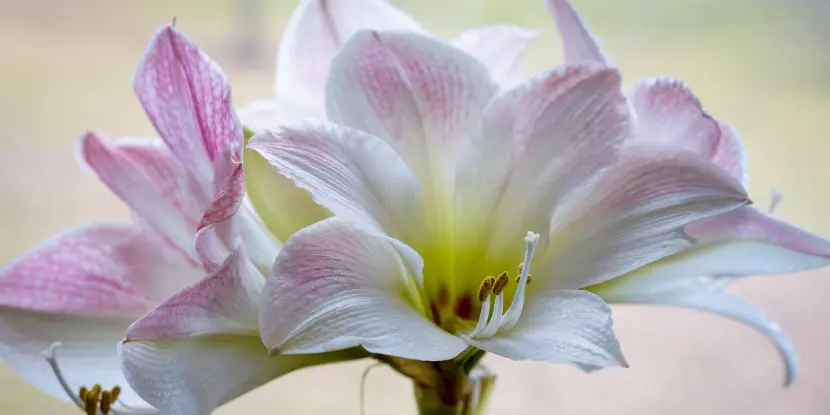
The delicate blooms of the Apple Blossom amaryllis.
Nymph
- A romantic variety with deep pink flowers and white edges
- Grows 12–18 inches
- Blooms are fragrant and typically measure 6 inches across
- Blooms in late winter to early spring indoors or spring outdoors in mild climates
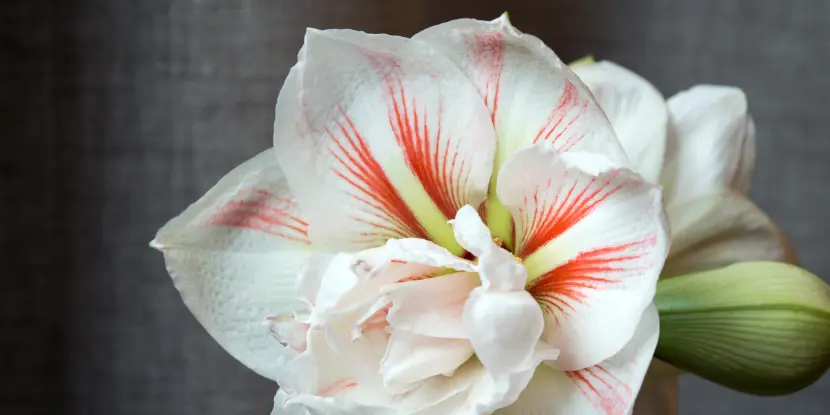
Nymph amaryllis blooms in late winter to early spring in mild climates.
Gervase
- A stunning double variety with white petals and dark pink streaks
- Grows 12–18 inches
- Blooms are fragrant and typically measure 6 inches across
- Blooms in late winter to early spring indoors or spring outdoors in mild climates
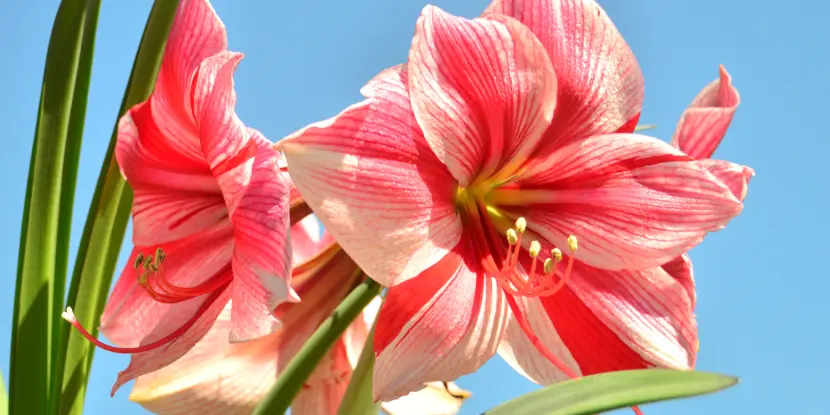
Gervase amaryllis, not to be confused with the comedian.
Clown
- A fun and whimsical variety with red streaks
- Grows 6–9 inches
- Blooms are fragrant and typically measure 4 inches across
- Blooms in spring to early summer outdoors in mild climates
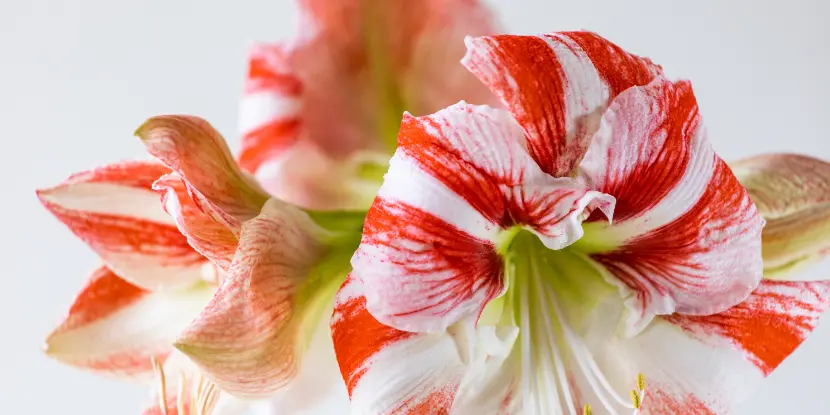
The cheery red stripes of Clown amaryllis flowers.
Optimal Growing Conditions for Amaryllis
Light
- Amaryllis prefer bright, indirect light. Direct sunlight can cause premature fading.
- Place them in an area with at least 6 hours of sunlight daily during the growing season.
Temperature & Humidity
- Amaryllis grow best in temperatures between 60–75°F (15.5–23.9°C)
- They tolerate cooler or warmer temperatures for short periods
- Avoid placing them in areas prone to frost, or indoors, near drafts or heat sources
- Higher humidity levels can promote larger blooms and prevent bud drop
Soil
- Well-draining soil is a must to prevent bulb rot.
- Ensure a pH between 6.0 and 6.5.
- Use a mix of sandy loam and organic matter.
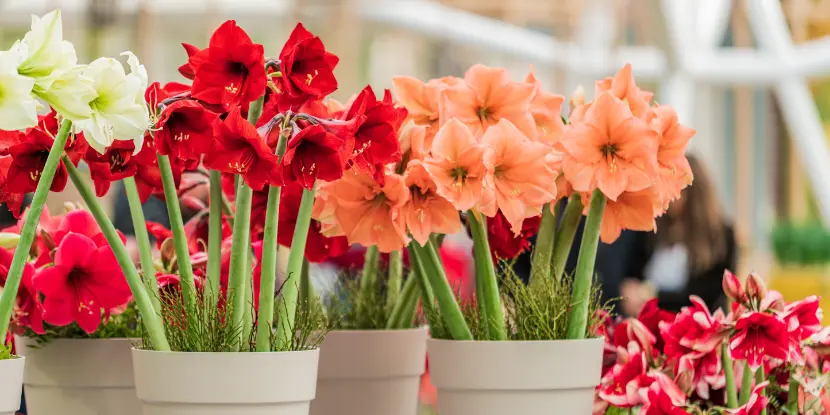
Amaryllis plants grow beautifully in pots.
Propagating Amaryllis
Looking to expand your collection? Propagation is much more straightforward than with pandas at the zoo.
- Bulbs: Planting mature bulbs is the easiest way to propagate amaryllis.
- Offsets: Mature bulbs produce offsets (small bulbs) that can be separated and replanted.
- Seeds: Advanced gardeners can propagate amaryllis from seeds, but this method takes years before the plants produce flowers.
Offsets are the most practical approach for home gardeners looking for quick results.
Steps for Planting Amaryllis
Plant in late fall or early winter for blooms in the spring.
- Select a sunny location with well-draining soil.
- Loosen the soil and mix in compost for added nutrients.
- Place the bulb so the neck (top) remains above the soil line.
- Space bulbs about 8 inches apart if planting multiple in a garden bed.
- After planting, water the bulb thoroughly.
- Add a layer of mulch to retain soil moisture and regulate temperature.
Planting Amaryllis Indoors
- Choose a pot at least 6–8 inches deep with drainage holes.
- Fill the pot with well-draining potting soil, leaving about an inch of space at the top for watering.
- Place the bulb in the center of the pot, with its neck above the soil line.
- Gently press the soil around the bulb to secure it.
- Water thoroughly after planting.
- Place the pot in a warm location with bright indirect light (avoid direct sunlight).
- As the plant grows, rotate it regularly to ensure even growth.
- Mist the leaves occasionally, or place the pot on a tray of pebbles and water to boost humidity.
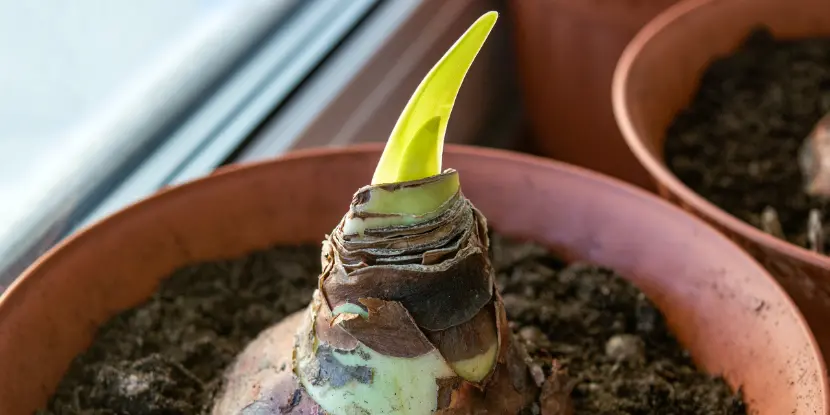
An amaryllis bulb sprouts in springtime.
Caring for Amaryllis
Water
- Water sparingly until you see signs of growth.
- Once leaves appear, water every 7–10 days, allowing the soil to dry out slightly between waterings.
Fertilizer
- Apply a balanced fertilizer (10-10-10) every 3–4 weeks during the growing season.
- Stop fertilizing once the plant enters dormancy (usually in late summer or early fall).
Pests & Diseases
- Common pests include aphids and spider mites. Treat infestations with insecticidal soap.
- Fungal infections like leaf spot or bulb rot can occur in damp conditions. Ensure proper drainage to prevent these issues.
Pruning & Root Division
- Remove spent flowers to encourage bulb energy storage for the next season.
- Allow foliage to die back naturally after blooming.
- Every 3–5 years, divide overcrowded amaryllis bulbs and replant them to maintain healthy growth.
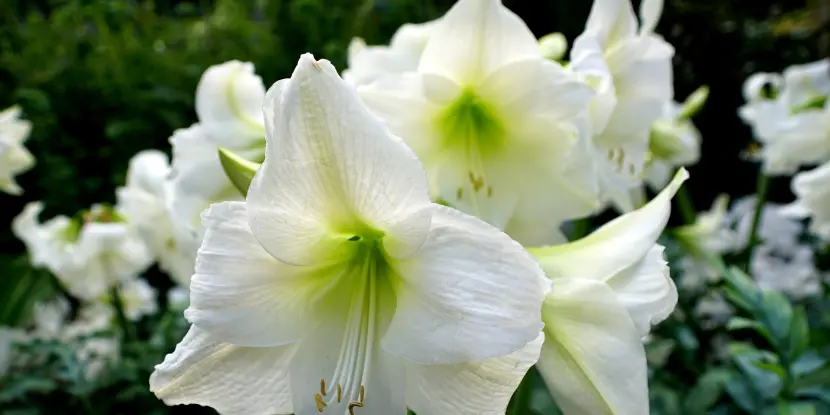
White amaryllis blossoms in the garden.
FAQs: Growing Amaryllis
Q: When is the best time to plant amaryllis bulbs in California?
Late fall to early winter (October to January).
Q: How often should I water amaryllis plants?
Water once the top 1–2 inches of soil feels dry.
Q: Can I grow amaryllis indoors?
Yes! Place pots near a sunny window with plenty of light.
Q: How long does it take for amaryllis to bloom?
Around 6–10 weeks after planting.
Q: Do amaryllis plants need full sun?
They thrive in full sun but can also tolerate partial shade.
Q: Can I leave amaryllis bulbs in the ground year-round?
Yes, in frost-free areas like most of California.
Q: How do I store bulbs during dormancy?
Dig up bulbs, clean them, and store them in a cool, dry place.

